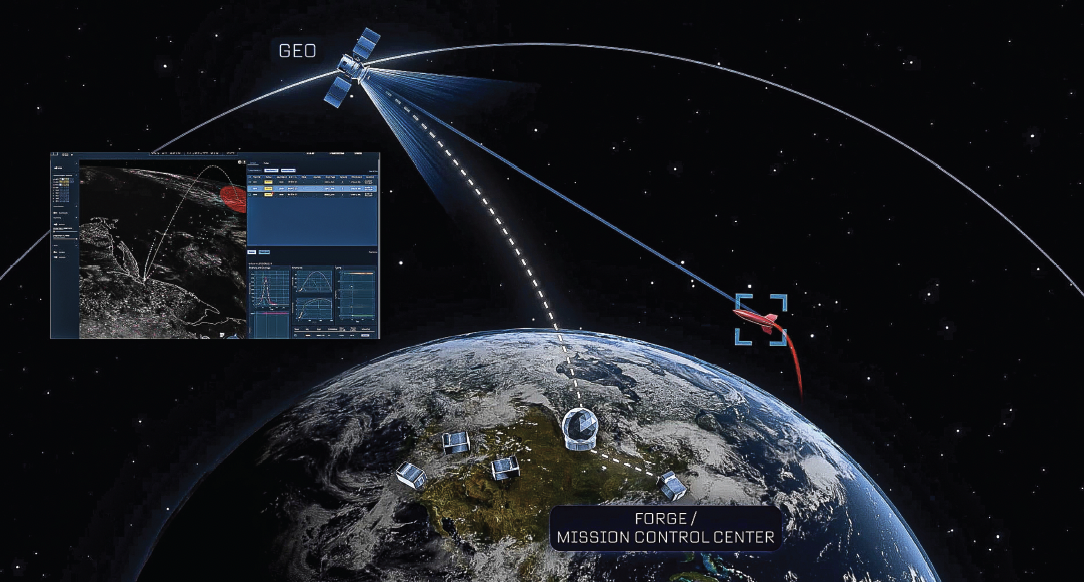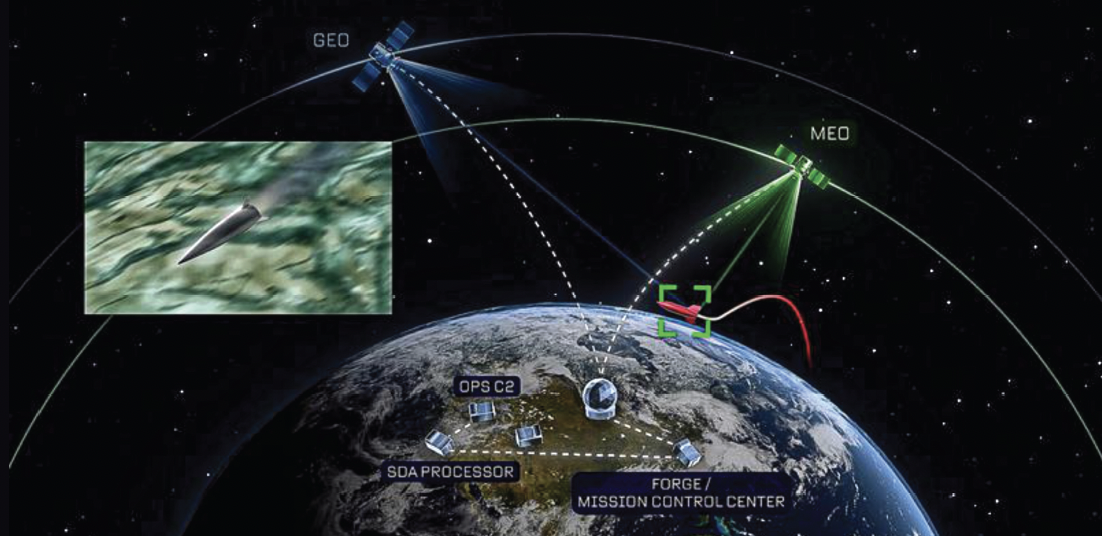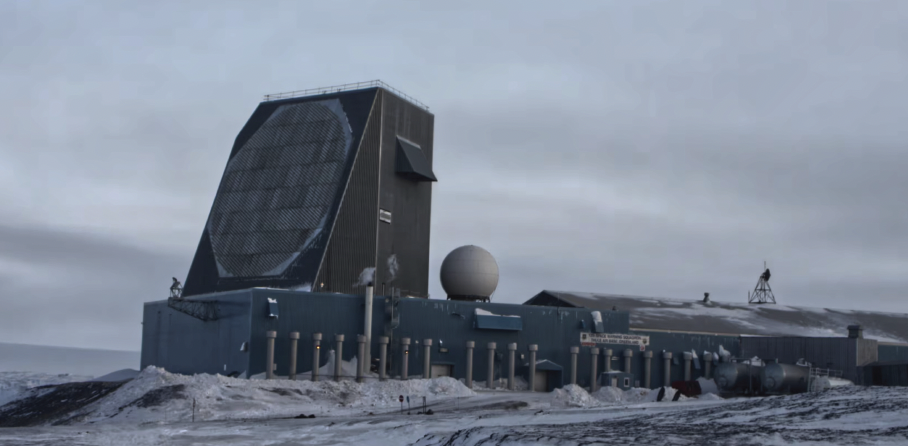Lisa Sodders, Space Systems Command Public Affairs
Space Systems Command’s FORGE Ground System is the Next Evolution in Missile Warning, Tracking
When it comes to protecting the Nation, setting the standard for missile warning and tracking isn’t enough. The most modern ground system to securely accept, analyze and distribute the data is also required.

The U.S. Space Force (USSF) needs to be able to gather data from every possible source—legacy as well as future satellite constellations, sensors on orbit and on the ground. Then, that data must be fuzed, quickly processed and delivered to U.S. warfighters and their allies at the speed of the fight.
 Space Systems Command’s FORGE, or Future Operationally Resilient Ground Evolution, is modernizing the missile warning and tracking ground system for both next-generation and legacy programs while advancing enterprise tactical C2 (command and control) capabilities.
Space Systems Command’s FORGE, or Future Operationally Resilient Ground Evolution, is modernizing the missile warning and tracking ground system for both next-generation and legacy programs while advancing enterprise tactical C2 (command and control) capabilities.
The FORGE program will deliver a government owned, modular and open architecture capable of leveraging the latest industry innovations to maintain the highest level of missile warning and tracking—even as emerging threats shift and change.

USSF Lt. Col.
Dan Groller
The missile warning and tracking mission originally was accomplished by relying on data from a few large, expensive and highly specialized satellites in Geosynchronous Orbit (GEO), said USSF Lt. Col. Dan Groller, Materiel Leader, FORGE.
Today, the U.S. Department of Defense (DoD) plans to launch proliferated Low Earth Orbit (LEO) and Medium Earth Orbit (MEO) constellations over multiple planes and in multiple phases, to improve the accuracy and lethality of U.S. defenses by improving USSF’s ability to track threats, versus merely detect and warn.
 “Just from a sheer numbers perspective, FORGE has to be ready to process all that data. We’re postured and having those conversations now to understand what it looks like in the future,” Groller said. “The legacy system alone is not meant to process the sheer amount of data being presented to operators.”
“Just from a sheer numbers perspective, FORGE has to be ready to process all that data. We’re postured and having those conversations now to understand what it looks like in the future,” Groller said. “The legacy system alone is not meant to process the sheer amount of data being presented to operators.”
The threat is evolving: both Russia and China are developing hypersonic weapons—weapons that can travel at speeds above Mach 5, or five times the speed of sound. These weapons also appear dimmer on radar; some with a glide phase and the ability to maneuver, which makes them particularly difficult to track. SSC’s FORGE will enable the Space Force to track them earlier and longer.
“As we bring data from LEO and MEO, we’ll be better able to track hypersonic weapons,” Groller said. “We won’t just see a boost phase and then it disappears and reappears. The whole premise of proliferated LEO and MEO constellations is that they’re closer to the surface of the Earth and that’s the tracking piece. FORGE is one of the systems that’s going to process that data and make it usable.”

Col. Stevie
Medeiros FORGE is more than just software. It’s a sophisticated system that incorporates four different components: 1) the framework, platform runs on; 2) the data processing system; 3) the command-and-control system for satellites, including mission management, telemetry, tracking and commanding, and ground control; and 4) the ground stations, said Col. Stevie Medeiros, senior materiel leader for Strategic MW Ground and Integration at SSC.
“With the older technology, you didn’t get as much data,” Medeiros said. “And what you did get, you had to sort through it to get to the truth. What we’re finding is that in some of the data we had sorted in the past, there may be remnants of other mission areas, and other ways of using that data for other things.”
In many cases, that data also was stovepiped, Medeiros explained. With FORGE, all the data will be processed centrally.
FORGE began as a prototype, with the first contract signed in August of 2020 to provide the mission data processing application framework, Groller said. It is currently processing Overhead Persistent Infrared (OPIR) data from the existing, legacy SBIRS satellites in GEO and HEO (Highly Elliptical Orbit.)
Groller said FORGE is also processing data from the legacy DSP (Defense Support Program) satellites.
These DSP GEO satellites were first launched starting in the 1970s to provide strategic and tactical missile launch detection.
“As long as DSP is pushing data, we have the ability to ingest that data,” Groller said. “Whatever DSPs are remaining and pushing data to the OPS floors, I need to be able to pick that up and run with it because any time I turn off a sensor I’ve now created a degradation to current operations.”

FORGE gained its first “operational acceptance”—official approval that the system is ready for use in real-world operational scenarios—last spring for the framework running on the OBAC (Overhead Persistent Infrared Battlespace Awareness Center) at Buckley Space Force Base, Colorado, Groller said.
An additional contract award for the next iteration of the framework was awarded in March and another is in progress.
The full FORGE configuration of FORGE apps on the framework, with added cybersecurity and the ability to process all the data, is expected this summer, Groller shared.
OBAC provides battlespace awareness and technical intelligence for theater-level, mission events, and by early 2027, FORGE will be supporting the 24/7/365 no-fail mission carried out by the 2nd Space Warning Squadron (2 SWS) that the Nation relies on.
In addition to all the current satellite data, FORGE will also be able to handle the coming Next-Gen OPIR GEO and Polar satellites and Resilient Missile Warning and Tracking MEO space systems once they are on-orbit.

Image of an Upgraded Early Warning
Radar systemThose new satellites will provide even better data that will enable USSF to improve its ability to characterize threats, Medeiros said, adding, “So not only are we doing the missile warning aspect of it, but we can also do a better job of taking that data, analyzing it and giving the operator better information to make sense of what the reality is.”
“Data is data to me, and the great thing about FORGE is that it’s not attached to just one type of data set,” Medeiros said. “It’s a modern system, so we can ingest multiple data sets and then do an analysis of that data to give our operators an advantage. With FORGE as that core, it’s not just for space constellations, it’s for any other data out there that we can bring into FORGE and leverage to do better analysis.”
In addition to expanded data exploitation—getting every usable scrap of information from a vast treasure trove of data—FORGE also boasts modernized user interfaces to make it easier for warfighters to make critical decisions quickly.
Enhanced cybersecurity was baked into the design from the beginning and is significantly improved from the existing Program of Record.

Image of all of SSC’s launchesIn the future, FORGE will ingest data from sensors that aren’t even on-orbit, such as ground-based sensors, to give warfighters the most accurate, most complete data possible, Groller said.
One example of these are the Upgraded Early Warning Radars (UEWRs), located across the United States and the U.S. European Command. The UEWRs have 240 to -360 degree coverage and are designed to detect and track Intercontinental Ballistic Missiles (ICBMs) and Sea Launched Ballistic Missiles (SLBM) while conducting general space surveillance and satellite tacking.
“With FORGE, we can take advantage of all these different systems,” Medeiros said. “We’re getting better quality on the tracking, so we may get a hit from SBIRS and can correlate that to information we’re getting from ground radar.”
The system is government-owned, but with a modular, open architecture that will allow USSF to keep FORGE up-to-date as technology—and the threats—continue to evolve.
“This is why we looked at going to a software acquisition pathway or staying on a Middle Tier Acquisition in perpetuity and never go into sustainment because it’s a very, very software-intensive program,” Groller explained. “By design we should never be done. We should have a system that allows us to continuously evolve as technology evolves, and as things are launching and becoming available to us. We should be ingesting that data. We’re looking at all data available to operators in order to sense, make sense, and win.”
Space Systems Command is the U.S. Space Force field command responsible for acquiring, developing, and delivering resilient capabilities to protect our nation’s strategic advantage in, from, and to space. SSC manages a $15.6 billion space acquisition budget for the Department of Defense and works in partnership with joint forces, industry, government agencies, academic and allied organizations to outpace emerging threats. Contact Space Systems Command at SSC@spaceforce.mil and follow on LinkedIn.

